
(05.02.05) Contemporary electronic experimenter, percussionist and graphic artist expatriate Jason Kahn’s Swiss-based label Cut is one of those unique imprints to release extremely quality limited editions that include colorful, geometric screen-printed sleeves alongside a bold, advanced listening experience. Since 1997 Kahn has now released fourteen diversely experimental records, including some of his own work.
TJ Norris caught up with him at home in Zürich.
::..:::…..:..::….:::::..:::..:::::::……:::…::.:::….::::..:..:::…::…….::::
Igloo :: You have moved around a bit in your life, how did you first start settling in to set up shop for Cut to be born?
Jason Kahn / Cut :: Basically, Cut was born out of necessity: I had a group, with the name Cut and I wanted to release a recording we had just made. This was in 1997. In essence, the label Cut was formed to release the group Cut’s second CD (the first CD and, before that, 7-inch single, were released on the Los Angeles label WIN Records).
Before moving from Berlin to Geneva in the summer of 1998 I produced Cut 002, which was a co-release with Toshimaru Nakamura’s Reset label. Cut 002 was the project Repeat’s (myself and Toshi) first CD, entitled Repeat.
Igloo :: Well that’s a clever way of streamlining a thought, the spirit behind a name. Now, you work with a wide array of international people, some very prolific (Taku Sugimoto) and others who are certainly perfectionists (John Hudak). How do you select from such a fine array of contemporary improvisers and how do you locate the artists appearing on the label?
JK :: In the case of Taku, this is someone I’ve known and played with since my first visit to Japan in 1997. We’d always wanted to collaborate and then I came across the idea of quasi-commissioning (or rather suggesting) a composition from him for percussion. In this case, Taku is functioning as a composer, rather than as an improviser, which is probably what he is better known for; though I have the impression that these days he is rather more interested in composition.
John Hudak and I were in contact for a number of years by email before I actually had the chance of meeting (and playing with) him. Long before I had been (and remain) a huge fan of his work.
In general, I would say the people who release recordings on Cut are often friends or friends of friends. The only people to ever really contact me out of the blue were Tu m’. This was the classic scenario of receiving a demo and liking it.
With Jason Lescalleet, I had been in contact with him through a concert series, the Sonique Serie, I had been organizing in Zürich from 2000 to 2002. He was initially confirmed to perform but then had to cancel. I liked what I had heard of his work so much that I decided to ask him to record a CD for Cut, which became his first full-length solo release.
The recording with Günter Müller, Tomas Korber and Steinbrüchel, “Momentan_def,” basically came about over a coffee one day, when Steinbrüchel mentioned that a recent concert of the group had been recorded. This recording became the CD. I knew and had played with all three of these musicians long before I decided to release a CD from them.
Igloo :: And I am so glad that tu m’ contacted you as it helped me familiarize myself with your label! Is there anything stylistic that brings these particular composers together under your roof? Similarities, disparities, rules, concepts?
JK :: When I choose a work to release on Cut I mostly go with my intuition. I have no set rules or concepts other than the desire to feel inspired by the work or by an artist’s previous body of work (as in the case of Norbert Möslang, with whom I’d been speaking with for years about releasing a recording of his).
What ends up getting released often shares certain similarities in how I approach working with sound. I’m not particularly interested in releasing music only created by electronic means, or only acoustic means; only improvised music or only composed music. For me, what is most important, no matter what the means of creating a work, is the final sound: does this address what I find important in working with sound, does this sound inspire me, does this sound move me?
Igloo :: The cardboard sleeves for the Cut line are quite exquisite. Can you tell me the concept behind these mini op-art gems? Are these limited editions to under 500, or are they custom made for order? What is your distribution like? What has been your “best seller” to date? Have any recordings sold out?
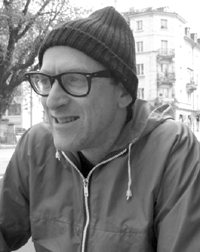
JK :: First of all, glad to hear that you like the cover artwork! I have to admit, that one of the great pleasures in having my own label is being able to design the covers. While still living in Los Angeles (where I grew up) in the 1980’s I worked at first as a typographer and later as a layout artist. I was designing a lot of the cover art, flyers and posters for groups I was playing in then, as well as a short-lived literary journal which I was editing. This period was when I basically cut my teeth in graphic design.
When I moved to Berlin in 1990 I lost touch with design work, living primarily as a musician. It wasn’t until I got my first computer in 1996 that I started to get interested in graphic design again.
For me, the Cut CD cover designs deal a lot with rhythm and, in a way, they mirror my approach to working with sound: something may look or sound static, but on closer inspection many details reveal themselves which on first look or listen elude us.
All the designs are done on computer but in a way by hand as I tend to work a lot with the small details, sometimes moving pixels around; other times working with vector graphics in a fashion more akin to drawing than cut and paste. At this point, the CD’s are produced in runs of 500. Several of the releases are now out of print. I would like to re-edition the deleted releases but lack the funding right now, which I’d rather put into new productions.
Distribution is really always a challenge. I have many small (and some not so small) distributors scattered around the globe. I also sell directly from the Cut site. A recent interesting development for me was finding distribution in China.
Some of my best sellers for the label have been my solo recordings Analogues, Drums and Metals, Plurabelle and Timelines. Other productions which have sold well have been Momentan_def from Günter Müller, Tomas Korber and Steinbrüchel and For the Time Being, from John Hudak, Bruce Tovsky and myself.
I have to stress here, however, that by “selling well” this means I sell enough copies to meet my costs. Beyond this, what is most important (aside from the fact that I continue to enjoy running a record label) is having the releases adequately written about in the press. For me, producing music, both as a musician and a label owner, is very much about communicating ideas. And for this reason, contact to people who write about music is very important.
Several Cut releases are already out of print: Cut, Popular Music That Will Last Forever; Jason Kahn, Drums and Metals; Jason Kahn, Analogues; Repeat, Repeat; Repeat, Select Dialect. And several other CD’s are running low.
Igloo :: The covers are silkscreened letterpress?
JK :: Yes, all the covers have been silkscreened. In the beginning, the covers were more or less done by hand-without a machine: only the screen, with myself and Gregor Hotz (one of the band members from the group Cut) painstakingly spreading the ink by hand to print each cover.
Later, I printed the covers myself, but on a big silkscreen machine. Nowadays, I have the covers printed at a silkscreen printer around the corner from my house.
Igloo :: Can you say some more about the importance of the critical word? I mean, how would you ask a pool of writers to approach your works? Would you be interested in talking about the musician/composer’s history or dig deeper into the basis for what an audience may hear between the tones and rhythms? Do you prefer physical writing over heady theory?
JK :: I’d have to say that what I particularly enjoy is having an interview, as this provides a dialogue between the writer and myself. This also gives me a chance to actively reflect on what I am doing, why I am doing and what I perhaps intend to continue doing in my work.
I personally find it fascinating to talk about an artist’s history. I am a big fan of biographies and autobiographies. When, for example, I find a person’s work interesting, then I inevitably try to find some biographical information about that person. How an artist develops over the course of a career I find intriguing and revealing.
For a pool of writers to approach my work perhaps initially it would only be necessary to experience the work, whether from a recording or live. The main point is the sound. To understand how I arrived at this sound, perhaps it could also be helpful for the writers to read previous interviews or other texts I’d written.
These days I don’t read too much theory about music, per se, though I have read many books about the theory of sound, the actual physical properties of sound. For example, I’m now reading Buildings for Music, by Michael Forsyth, which is a book addressing the architect, the musician, and the listener from the seventeenth century to the present day. On the Sensations of Tone by Hermann Helmholtz and Genesis of a Music by Harry Partch are also two of my all-time favorites in this field. When I was younger I read more music critique, especially the writings of Lester Bangs and Richard Meltzer.
Igloo :: Well, it’s great to hear that you enjoy the process of this process! Makes my work pretty straight forward and allows for a proper in-depth investigation. I’m just a DNA freak I guess. Dig deeper, get to the core and then examine the finer particles. Incidentally reminding me of what you do with Cut and even its website which is as minimal as the packaging, aside from some basic information, cutting to the chase on the overall deliverance of the label’s message. Can you describe the aesthetic for Cut and how it connects directly to the music you release? In other words, without pigeon-holing yourself, if there were a tagline that would describe Cut in a few short sentences or less what would it say?
JK :: The aesthetic of Cut reflects my attempt at a succinct presentation of what I am interested in working with in sound and, to a lesser extent, image.
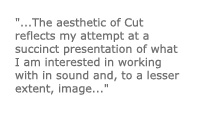
The pared down look of the Cut site is, of course, an extension of my own design preferences; but it also presents a kind of visual correlation to the way I like to work, which I like to think of as “direct.” This is to say, a presentation which is clear but one which does not attempt to tell people how to think about what they are going to be hearing (I like to avoid, if possible, slapping labels on what I am doing as a musician or what is being released on Cut).
Igloo :: Do grants play into the way in which you are able to better reach audiences and expand your work as a composer?
JK :: In my experience, Switzerland has very good support for artists on both a national and local level. Without grants from Pro Helvetia (the Arts Council of Switzerland) or the City of Zürich, I would have never been able to participate at certain festivals around the world. Often, festivals do not have enough funding to pay travel costs. In these cases, I have to apply for funding support from the Swiss government.
I have also received a composition grant from Pro Helvetia, which made it possible for me to record Miramar, my fourth solo CD (Sirr Records); and last year I received a grant from the City of Zürich to realize the work Timelines.
In addition to this, some releases by other artists on Cut have been financed by Swiss cultural funding. Norbert Möslang’s recent CD Capture is an example of this, with the City of St. Gallen contributing some support to the production costs.
So, to answer your question, in recent years receiving grants has been very helpful to me in presenting my work and the work of others.
Igloo :: As a musician yourself did you see the creation of a label as being a primary launch spot for your own sound? Can you talk some about your background, how you got into the indie production business? Can you talk about your own work and how it was a catalyst for the label, both artistically and conceptually?
JK :: Initially, Cut functioned as a means of publishing my own work.
I got into the independent music production business when I started to play music in 1981. I was very much inspired by the D.I.Y. attitude of punk. I spent much of the late 1970’s, early 1980’s going to punk and new wave clubs in Los Angeles and London (where I lived from 1981-1982). I liked that fact that anyone could get up on stage and play; anyone could make a record, start a label, book a tour… just get out there and do it. To this day, though what I am doing artistically has moved in other directions, I still keep this attitude.
I encountered much of the same spirit while living in Berlin during the 1990’s in the burgeoning techno scene there. Many of my friends were DJ’s and also producing their own releases on small labels, running small clubs. In a way, this climate infected me and got me moving to start my own label.
I feel that with the kind of work I am promoting, there is not much money to be made so I have to keep production simple, keep costs down… but all not at the sacrifice of the work. More than this, what I like about this approach is the direct contact I have with people buying the CD’s; with journalists writing about the releases; with the distributors. It is basically just a great experience to be in contact with people from all around the world. I recently sold some CD’s to a person in Kazakhstan, for example.
In terms of my own work, over the years I’ve become more interested in sound itself, rather than gesture around sound. I am primarily interested in going deeper into sound and the listening process. This means, in essence, expanding my awareness when listening. More than ever before “active listening” has become a necessity. These days I feel so bombarded by sound (and image) that I really want to slow down when I listen (or look) and actively, consciously go into the object of my perception. Much of what I’m doing in my musical activity and sound installation work deals with these issues.
Cut is an extension of these thoughts, as I also attempt through Cut to promote the work of others who I feel share a similar approach in their work with sound.
Igloo :: If you could be anywhere in the world you could visit and perform live where would it be and why?
JK :: I would love to perform in India. I spent two months visiting there in 1997. The reason I would like to perform there is I find certain correlations in Indian music and my own work with sound.
What struck me when visiting India was the sense of “timelessness” associated with their practice of making music. I had the impression that in certain temples the music never stopped. I was staying once at the Golden Temple in Amritsar and when I went to sleep in the evening music was being played; when I woke very early the next day the music was still going! (ok, maybe it stopped in the deep night…). Or once I was walking very late at night along the banks of the Ganges near Varanasi. I passed several temples where music was still being played.
Aside from this, the practice of composition in Indian traditional music is directly connected to the notion of spatial context. There are ragas for particular times of day and particular seasons of the year. Sound and light and the perception of space seem to go hand-in-hand in Indian traditional music.
In my own work, especially the installations, I am interested in the idea of sound with no beginning and no end; and of sound in relation to space and particularly the changing properties of a space, such as the light, the temperature.
For these reasons, I think it could be fascinating to perform a concert or present a sound installation in India.
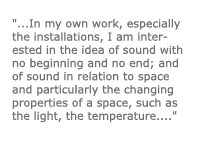
Igloo :: Let’s go live. Have Cut artists collectively been involved as part of any international music festival? What are your upcoming plans to play live and how different is it from what you hear on disc? Give me an idea of the live experience.
JK :: There has not been a “Cut label night” at any international music festival. It would be a great experience, but, as everyone is scattered all over the globe, I think this could be a rather expensive affair!
Some upcoming events are a concert at the Taktlos Festival in Switzerland, where I will be premiering my Timelines composition, with the musicians Günter Müller, Tomas Korber, Norbert Möslang, Steinbrüchel and Christian Weber. This piece has so far only been recorded; we’re all very much looking forward to having the opportunity to present this live.
I’m also very excited about participating at the Send and Receive Festival in Winnipeg (Canada) this coming October. I will be presenting a sound installation, giving a concert and also possibly holding a lecture or workshop.
The live experience of my work, in relation to a recording, all depends on what is being presented: for example, the Timelines composition is pretty exactly mapped out along a time axis. Within certain parameters the musicians are free to play as they choose. Of course, the sense of performing before an audience will definitely effect how the composition is being played.
The same holds true for Taku Sugimoto’s composition Music for Cymbal. Playing this live (which I’ve so far only done once) is very challenging, as it takes me much longer to get into the atmosphere of the piece than when I play it at home.
I perform live in different contexts and configurations: sometimes I am improvising, sometimes playing compositions; sometimes I am using percussion, or only analogue synthesizer or laptop, or combining these different instruments. In almost all cases, no matter if I’m playing in front of an audience or recording alone somewhere, I pay particular attention to what I am doing in relation to the space I am working in. For me, the space is always the main instrument, as it shapes our perception of sound and the actual physical properties of the sound itself.
Igloo :: Installations are of great interest to me and have been for decades. What are your feelings around sound recordings that were based around installations? Does it seem that the recording of such events/presentations lacks the visual components or act merely as documents? Are there any particular installation artists of note that you admire and whose work you have seen and/or inspire what you might do?
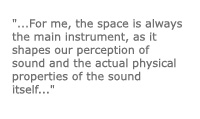
JK :: For my own installation work, I find recordings of an installation not even useful as a document of the work. The aspect of documenting my own sound installations has been an ongoing dilemma for me since I started to work this way, and for the main reason that the works exist only in the space they are exhibited in. The sound is meant to be heard in the context of a particular space, taking into the account the light of the space, the acoustics of the space, the temperature of the space, the sounds perhaps occurring outside the space, etc. To present a recording of only the sound from that space, wrenched from its context, would be, to me, akin to scraping the paint from a painting and saying, “here is the painting, imagine what it looked like!”
Now, I’m not trying to say here that this holds true for other people’s site-specific sound works or the recordings of these works. The Norbert Möslang CD Capture on Cut is in fact a recording of the audio part of a sound and light installation. And, for me, this works quite well.
One of my great inspirations in sound installation work has been Max Neuhaus. He is one of the few artists in this field who actually works with the space at hand and creates sound to work in conjunction with the space, setting up a system where the sound affects the space and the space affects the sound, with the main focus being our very perception and how we experience the space and ourselves in relation to that space.
Igloo :: From one installation artist to another I have to say that’s a great perspective! Sound exists in and out of a physical space when it comes to installation and once out of context it’s got another life altogether.
How about upcoming releases on Cut; what’s planned next?
JK :: I have one planned release for September 2005 of a solo recording from Zürich guitarist Tomas Korber.
Igloo :: Thanks for taking out some time to shed some light and bring us up to speed on what’s been cooking behind the scenes. As is customary, you get the final word here.
JK :: I’d just like to thank all those people who have taken an active interest in the music Cut has released over the years. It has been a great pleasure for me to not only present my own work but also that of other people whose vision has so inspired me.
End of interview.
::..:::…..:..::….:::::..:::..:::::::……:::…::.:::….::::..:..:::…::…….::::
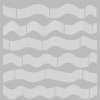 :: Suddenly, three minutes into this hour plus-long piece a bouncy mix of high tone and pitter-patter ignites. Silence plays an equal part to the structure of sound containment here. It’s a metaphysical space, very transformative, tranquil and meditative. Until the rhythm emerges which is a gentle continuous ringing of a cymbal like a gong. It’s an awakening, a spellbound, elongated steel drone that circles and then climbs. The bounce beats faster and is mirrored by its own echo, into a semiotic dance pattern, very low-fi and on the down low. This is syncopation for dreamers, good for slow yoga-like movements. Sugimoto designs Music for Cymbal as if it were the steely curvature of an alien ship, shiny, pulsing, and about to take off, just hovering with a sheer buzz. Contemplative and immediate.
:: Suddenly, three minutes into this hour plus-long piece a bouncy mix of high tone and pitter-patter ignites. Silence plays an equal part to the structure of sound containment here. It’s a metaphysical space, very transformative, tranquil and meditative. Until the rhythm emerges which is a gentle continuous ringing of a cymbal like a gong. It’s an awakening, a spellbound, elongated steel drone that circles and then climbs. The bounce beats faster and is mirrored by its own echo, into a semiotic dance pattern, very low-fi and on the down low. This is syncopation for dreamers, good for slow yoga-like movements. Sugimoto designs Music for Cymbal as if it were the steely curvature of an alien ship, shiny, pulsing, and about to take off, just hovering with a sheer buzz. Contemplative and immediate.
::..:::…..:..::….:::::..:::..:::::::……:::…::.:::….::::..:..:::…::…….::::
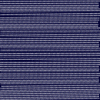 :: Static twinkle in the sky, how Timelines tricks the eye. Well, in that the music is somewhat optical, 3D, popping with vinyl scratches ands threaded with a dense drone. Sounds that could only be adopted from a fantasy craft of some sort, a secret flight of fantasy. Timelines is a very architectural sounding piece in which Jason Kahn employs the help of Tomas Korber, Steinbruchel, Christian Weber, Gunter Muller and Norbert Möslang playing everything from contrabass to iPod. Kahn, himself is listed as playing the “graphical score” which is what makes this sound very airtight, almost boldly sea-baring. The pulsing epicenter of the work builds spherically. The ragged edges of torn-up percussion help to make this uneasy listening, all while the mechanics are like a bevy of fountain-like sparks. Scraping and maneuvering through textural space, this becomes its own language of provocative erasure.
:: Static twinkle in the sky, how Timelines tricks the eye. Well, in that the music is somewhat optical, 3D, popping with vinyl scratches ands threaded with a dense drone. Sounds that could only be adopted from a fantasy craft of some sort, a secret flight of fantasy. Timelines is a very architectural sounding piece in which Jason Kahn employs the help of Tomas Korber, Steinbruchel, Christian Weber, Gunter Muller and Norbert Möslang playing everything from contrabass to iPod. Kahn, himself is listed as playing the “graphical score” which is what makes this sound very airtight, almost boldly sea-baring. The pulsing epicenter of the work builds spherically. The ragged edges of torn-up percussion help to make this uneasy listening, all while the mechanics are like a bevy of fountain-like sparks. Scraping and maneuvering through textural space, this becomes its own language of provocative erasure.
::..:::…..:..::….:::::..:::..:::::::……:::…::.:::….::::..:..:::…::…….::::
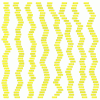 :: Capture is mechanical noise of frequency that is flatly wide. Starts pretty mean and generates into a low grumble. Reminding me of a disgruntled beard buzzer, the edges of Norbert Möslang’s weapon of choice is not as sharp as it is luminous, as in light-sound installation that is. Recorded on Independence Day 2004 what’s captured almost evokes a very lengthy lit wick of a pyrotech’s test, or the squat moan of a small power generator that’s been amplified 10x. Most of this very live, hour long experiment is far less about the musicality that you find in other Cut releases, more experimenting with balance, space and other mathematical noise plots.
:: Capture is mechanical noise of frequency that is flatly wide. Starts pretty mean and generates into a low grumble. Reminding me of a disgruntled beard buzzer, the edges of Norbert Möslang’s weapon of choice is not as sharp as it is luminous, as in light-sound installation that is. Recorded on Independence Day 2004 what’s captured almost evokes a very lengthy lit wick of a pyrotech’s test, or the squat moan of a small power generator that’s been amplified 10x. Most of this very live, hour long experiment is far less about the musicality that you find in other Cut releases, more experimenting with balance, space and other mathematical noise plots.
The blur of which sound shifts and drags in raw, stripped down simplicity. The combination of parts works very linearly, and to fully enjoy this you would have to sit for the duration with much patience, but for some it might be a tedious exercise and there may not be enough edge to hook the casual listener. Though after about forty minutes Möslang starts to layer, and the shift creates a tension, that is quite unnerving and irresistible, but the wait is too long at that point. Maybe the waiting IS the tension. Though in many ways it reminds me of when my electro toothbrush runs out of hutspah on a long trip somewhere there isn’t the correct ac adapter, and the resulting the fear of being unclean. The washes of various ratios of feedback/static that are achieved in the final leg of Capture start to bloom and the shifts are more adjacent and come faster. The building network of integrated lines of sound sources start to evolve into something far more textural as its secondary engine revs to the end.
::..:::…..:..::….:::::..:::..:::::::……:::…::.:::….::::..:..:::…::…….::::
All titles above are out now on Cut.
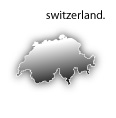







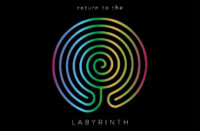






![Luke’s Anger :: Ceiling Walker EP (Love Love) — [concise]](https://igloomag.com/wp/wp-content/uploads/2025/04/lukes-anger-ceiling-walker-vinyl_feat-75x75.jpg)

![Ndorfik & madebyitself :: Solos EP (People Can Listen) — [concise]](https://igloomag.com/wp/wp-content/uploads/2025/04/ndorfik-madebyitself-solos_feat-75x75.jpg)





